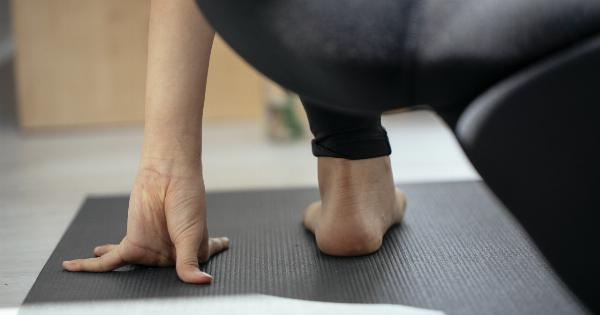Cervical syndrome, also known as cervical spondylosis, is a degenerative condition that affects the cervical spine.
As we age, the discs in our spine begin to deteriorate, leading to the development of symptoms such as neck pain, stiffness, and limited range of motion. While there is no cure for cervical syndrome, there are several natural remedies that can help manage symptoms and slow down the progression of the condition. Here are some of the most effective natural remedies for cervical syndrome.
1. Exercise and Stretching
Exercise and stretching can help improve the strength and flexibility of the muscles in the neck and upper back, which can alleviate symptoms of cervical syndrome.
Low-impact exercises such as walking, swimming, and cycling are ideal for people with cervical syndrome, as they can help strengthen the muscles without putting too much strain on the spine. Some specific neck exercises and stretches that can be helpful include:.
- Neck rotations
- Head tilts
- Shoulder shrugs
- Upper trapezius stretch
- Levator scapulae stretch
It is important to consult with a physical therapist or healthcare provider before starting an exercise or stretching program, as they can help identify which exercises are safe and effective for your individual needs.
2. Posture Correction
Correcting poor posture can be an effective way to manage symptoms of cervical syndrome. Poor posture, such as slouching or hunching over a computer, can put extra stress on the cervical spine and exacerbate symptoms. Tips for improving posture include:.
- Sitting up straight with shoulders back and relaxed
- Keeping feet flat on the ground while sitting
- Ensuring that your computer monitor is at eye level
- Taking frequent breaks to stand up and stretch
Using ergonomic office equipment, such as a supportive chair and keyboard, can also be helpful in maintaining good posture.
3. Heat and Cold Therapy
Applying heat or ice to the affected area can help alleviate symptoms of cervical syndrome. Heat therapy, such as a warm compress or heating pad, can help relax tense muscles and improve blood flow to the affected area.
Cold therapy, such as an ice pack or cold compress, can help reduce inflammation and numb the area to reduce pain. Some people find that alternating between heat and cold therapy can be particularly effective.
4. Massage
Massage therapy can help improve circulation and reduce tension in the muscles of the neck and upper back. A professional massage therapist can help target specific trigger points and areas of tension to alleviate symptoms of cervical syndrome.
Self-massage techniques, such as using a tennis ball or foam roller to target trigger points, can also be effective.
5. Acupuncture
Acupuncture is a traditional Chinese medicine technique that involves the insertion of thin needles into specific points in the body.
Some studies have shown that acupuncture may be effective in reducing pain and improving mobility for people with cervical syndrome. It is important to consult with a licensed acupuncturist to ensure safe and effective treatment.
6. Omega-3 Fatty Acids
Omega-3 fatty acids, found in fish oil and other sources, have been shown to have anti-inflammatory properties that can help reduce inflammation in the body.
Some studies have suggested that omega-3 fatty acids may be beneficial in reducing symptoms of cervical syndrome. It is important to talk to a healthcare provider before starting any new supplement regimens.
7. Turmeric
Turmeric is a spice that has been used in traditional medicine for its anti-inflammatory properties.
Some studies have suggested that the active ingredient in turmeric, curcumin, may be effective in reducing inflammation and pain associated with cervical syndrome. Turmeric can be taken as a supplement or added to food as a spice.
8. Ginger
Ginger has been used in traditional medicine for its anti-inflammatory properties. Some studies have suggested that ginger may be effective in reducing inflammation and pain associated with cervical syndrome.
Ginger can be consumed as a supplement, added to food as a spice, or steeped in hot water as a tea.
9. Magnesium
Magnesium is a mineral that is important for muscle relaxation and nerve function. Some studies have suggested that magnesium supplementation may be beneficial in reducing symptoms of cervical syndrome.
Foods that are rich in magnesium include spinach, almonds, black beans, and avocado.
10. Vitamin D
Vitamin D is important for bone health and immune function. Some studies have suggested that vitamin D deficiency may be associated with a higher risk of developing cervical syndrome.
Foods that are rich in vitamin D include fatty fish, egg yolks, and fortified foods such as milk and cereal. Vitamin D can also be obtained through exposure to sunlight.































